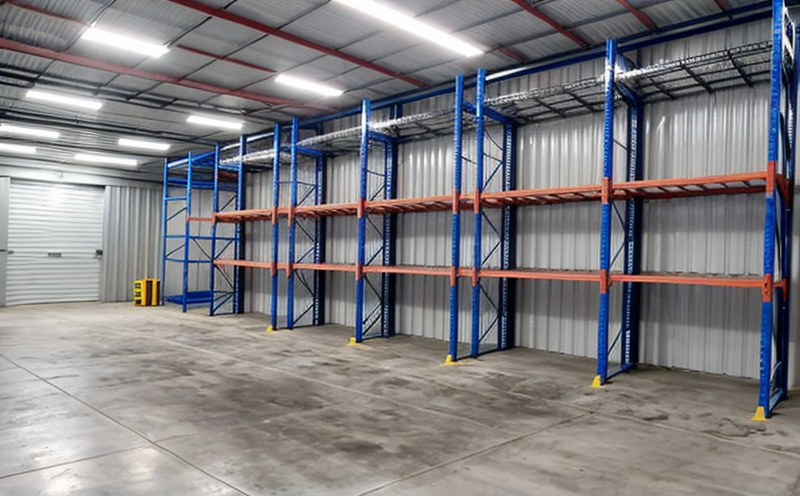Storage rack inspection
The inspection of storage racks is a critical aspect of warehouse and storage systems maintenance. Storage racks serve as the backbone of efficient material handling in logistics, manufacturing, and distribution centers. They are designed to support heavy loads for extended periods, ensuring that materials remain safe and accessible.
Given their importance, regular inspections are essential to identify potential issues before they escalate into failures. This ensures compliance with industry standards and safety regulations while minimizing downtime and operational risks. The inspection process involves a thorough examination of the structural integrity, load-bearing capacity, stability, and overall condition of the racks.
The inspection scope includes evaluating key components such as shelves, columns, cross-members, and connecting hardware. Compliance with international standards like ISO 14406-2 is crucial for ensuring that storage systems are designed, constructed, and maintained to the highest safety and performance levels. The inspection process also involves assessing the impact of environmental factors on rack integrity over time.
Properly conducted inspections not only enhance operational efficiency but also contribute to a safer working environment by mitigating risks associated with structural failures. This can prevent accidents that could result in injury or property damage, thereby reducing liability and insurance costs.
The inspection process typically involves visual assessments complemented by non-destructive testing techniques such as ultrasonic testing (UT), magnetic particle testing (MPI), and eddy current testing (ECT). These methods help identify latent defects that may not be apparent through visual inspection alone. The use of advanced instrumentation ensures accurate data collection, which is essential for informed decision-making.
In summary, a robust storage rack inspection program is vital to maintaining the reliability and safety of warehouse systems. It involves a comprehensive evaluation of structural integrity, compliance with relevant standards, and the implementation of preventive maintenance strategies. Regular inspections ensure that potential issues are addressed promptly, enhancing both operational efficiency and safety in logistics operations.
Benefits
The benefits of regular storage rack inspections extend beyond mere compliance with regulatory requirements. By conducting these inspections, organizations can significantly enhance their overall warehouse management systems, thereby achieving several key advantages:
- Enhanced Safety: Routine inspections help identify and rectify structural weaknesses before they lead to accidents or catastrophic failures.
- Increased Operational Efficiency: By ensuring that racks are in optimal condition, the likelihood of downtime is reduced, leading to smoother operations.
- Cost Savings: Preventive maintenance strategies can extend the lifespan of storage systems, reducing the need for costly replacements or repairs.
- Compliance with Standards: Adherence to international standards such as ISO 14406-2 ensures that the warehouse meets all regulatory and safety requirements.
In addition to these tangible benefits, regular inspections contribute to a culture of proactive maintenance, which fosters continuous improvement in operational processes. This not only enhances the reliability of storage systems but also supports sustainable business practices by minimizing waste and optimizing resource utilization.
Competitive Advantage and Market Impact
The implementation of a comprehensive storage rack inspection program can provide significant competitive advantages in the logistics, manufacturing, and distribution sectors. Here are some key points that highlight the market impact:
- Enhanced Reputation: Organizations that prioritize safety and compliance are often viewed as more reliable partners by clients and stakeholders.
- Innovation Leadership: By staying ahead of regulatory changes, companies can position themselves as leaders in industry best practices.
- Differentiation: A robust inspection program sets a company apart from competitors who may not prioritize safety or compliance.
- Customer Trust: Demonstrating commitment to safety and quality fosters trust among customers, which is crucial for long-term relationships.
In the highly competitive logistics industry, these advantages can translate into increased market share and better customer satisfaction. Moreover, adherence to international standards such as ISO 14406-2 not only ensures compliance but also positions the company as a trusted partner in industries that prioritize safety and quality.
Use Cases and Application Examples
| Use Case | Description |
|---|---|
| Warehouse Expansion | Incorporating an inspection into a warehouse expansion plan ensures that new storage racks are installed to the highest safety and performance standards. |
| New Installation | Initial inspections for newly installed storage racks verify compliance with design specifications and ensure structural integrity. |
| Maintenance Scheduling | Regular inspections help in scheduling timely maintenance activities, preventing unforeseen failures that could disrupt operations. |
| Rack Repairs | After repairs or modifications to storage racks, inspections ensure that the structural integrity and performance meet required standards. |
| Post-Accident Investigation | In cases where accidents occur involving storage racks, inspections are conducted to identify root causes and implement corrective measures. |
| Pre-Transfer Inspection | Before transferring ownership or responsibility of a warehouse, an inspection ensures that the current state of storage racks is accurately represented. |
In each of these scenarios, thorough inspections play a crucial role in ensuring that storage systems meet the required standards and are free from defects. This not only enhances safety but also supports operational efficiency and long-term reliability.





